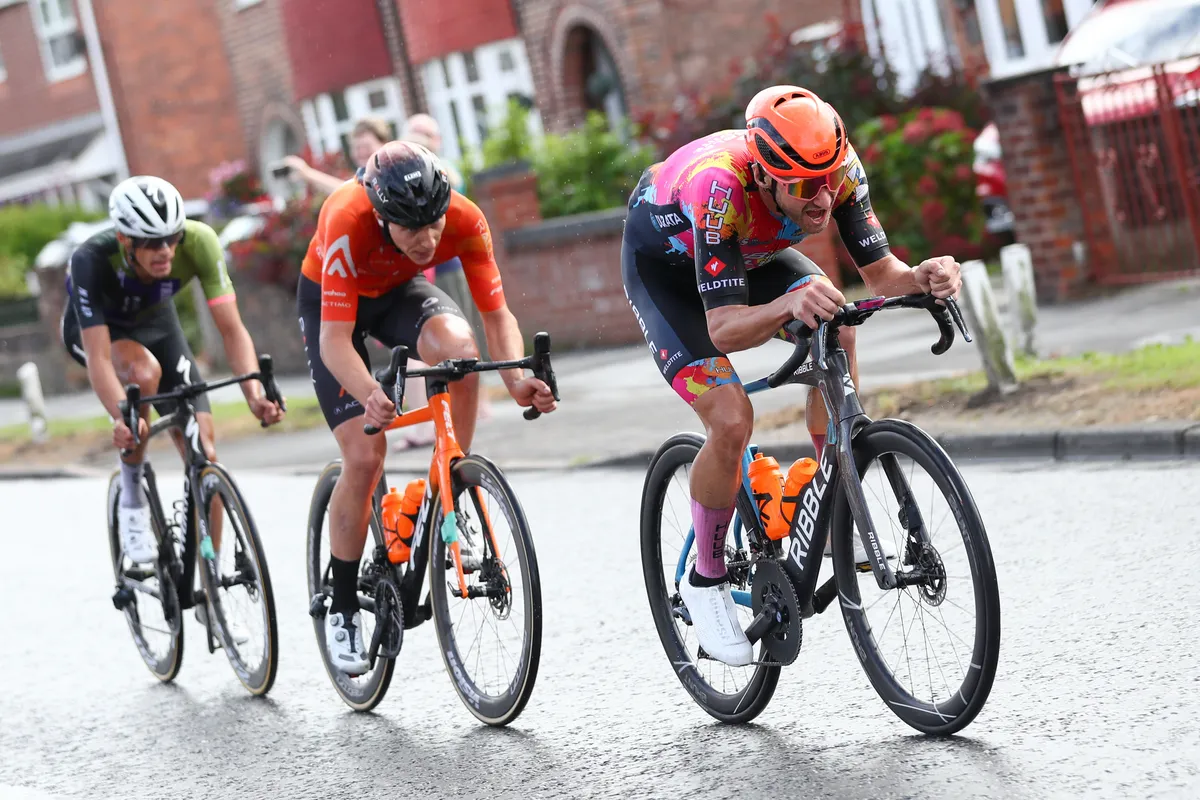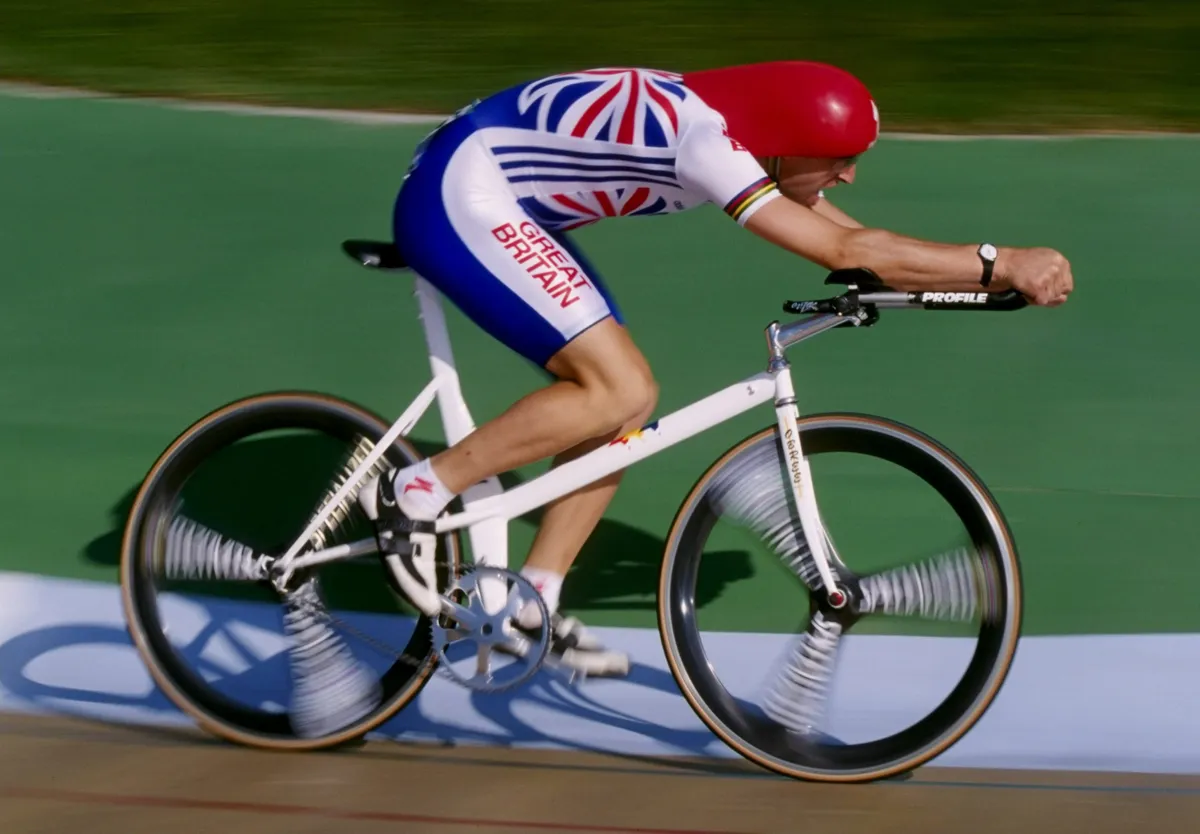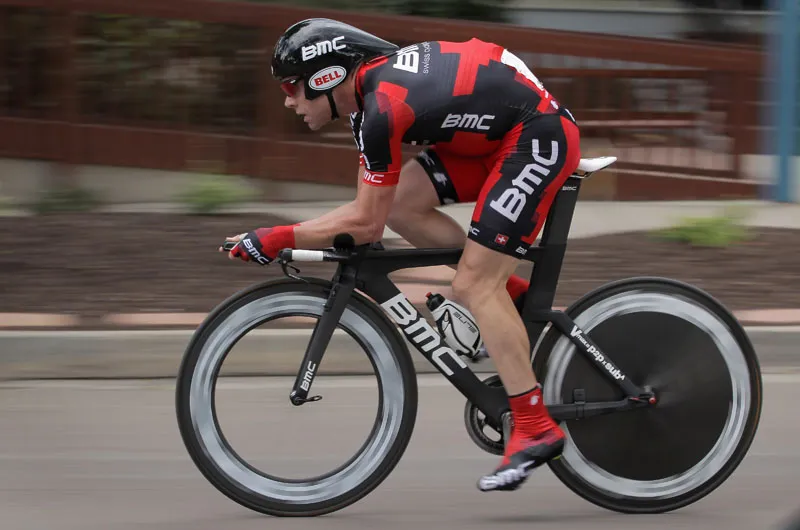Road race bikes typically have short head tubes and riders who race typically slam their stem. But these two truths don't necessarily equate to more speed.
A new pro cycling trend has emerged in recent years that’s trickling down to amateur racers and riders, where stack height is being increased in search of speed.
Riders are fitting more spacers under their stems or, in some cases, fitting dramatic riser stems to raise their stack height and enable them to sustain a more aerodynamic body position to ride faster in more comfort for the same effort.
But why?
The theory: Higher is faster

This theory is nothing new. Bike racers have been riding road bikes with their hands on the hoods and forearms parallel to the ground for a long time to close off the parachute-like void between their hands and head, and become more aerodynamic.
The problem with holding this position with a totally slammed stem is that, for most riders, it isn’t very sustainable. After just a few minutes, your neck will start to ache and your head will rise back up into the wind, your triceps will scream and force your arms to straighten back out, and your hip angle will be tight and feel restrictive.
By raising your stack height, this position becomes much more sustainable, placing less stress on these key areas.
Pro cyclists have started to cotton on to this and eschew a slammed front end in favour of a taller stack height.
But is it really faster? I did some testing to find out.
How I tested

I picked a 500m stretch of road near Bristol in the UK that was dead straight and flat. There was a slight headwind on the day of testing, but nothing severe or gusty enough to wildly skew my (back of the napkin) data.
I wanted to test three different position set-ups – my stock position on my 52cm Specialized Tarmac SL8 with its -12-degree stem in a 120mm length, with 15mm of spacers underneath.
I then switched this for a BBB HighSix adjustable stem in a 110mm length with a -40-degree angle, before adjusting the stem to a 40-degree angle.
In all three positions, I held my arms at 90 degrees and did my best to tuck my head down as low as I could.
I had a rolling start and aimed to hold 40kph for the test run, which I would repeat three times in each position. I recorded the power data for each run on a set of Favero Assioma power meter pedals.
It's worth noting this test isn’t in-depth or controlled enough to categorically determine which of these positions is fastest, and it’s not a broad enough test pool to really draw any definitive conclusions.
However, the test is crucially repeatable and accessible enough that, if you want to test your own position at home, you could do so and gain an understanding of what might work for you.
The results
| Lap Time | Lap Distance | Average Speed | Average Power | ||
| Position 1 (Control) | Test 1 | 40s | 0.45km | 40.4kph | 376w |
| Test 2 | 39s | 0.45km | 41.1kph | 376w | |
| Test 3 | 38s | 0.43km | 41.2kph | 384w | |
| Average | 39s | 0.44km | 40.9kph | 379w | |
| Position 2 (Slammed) | Test 1 | 39s | 0.44km | 40.7kph | 405w |
| Test 2 | 39s | 0.43km | 40.0kph | 390w | |
| Test 3 | 39s | 0.44km | 40.4kph | 405w | |
| Average | 39s | 0.44km | 40.4kph | 400w | |
| Position 3 (High) | Test 1 | 39s | 0.44km | 40.4kph | 373w |
| Test 2 | 39s | 0.45km | 41.1kph | 363w | |
| Test 3 | 39s | 0.43km | 40.1kph | 353w | |
| Average | 39s | 0.44km | 40.5kph | 363w | |
| Average Speed | Average Power | ||||
| Control | 40.9kph | 379w | |||
| - 40 Degrees | 40.4kph | 400w | +21w | ||
| + 40 Degrees | 40.5kph | 363w | -16w |
The results of the test show that with the stem in its standard position that I’m used to riding, I averaged 379w riding at 40.9kph across the three runs.
In the lower position with the stem in its -40-degree orientation, I needed to average 400w exactly to ride at 40.4kph over the three test runs.
With the stem adjusted to the highest 40-degree setting, the power required for me to ride at 40kph was 16w lower than my standard position – averaging 363w to sustain 40.5kph.
Other reflections

In the 40-degree high position, the bike felt a little twitchy. I hadn’t accounted for the reduction in reach a higher stem would bring to the bike, so the handling was a little compromised compared to what I’m used to.
However, I got used to it after just a few minutes of riding.
If I were to carry out the test again, I would spend more time matching the reach between all three positions so I could better isolate the change in stack height alone.
I would also like to test the positions on a longer course to get more of a feel for how sustainable each position was.
As uncomfortable as it was holding the super-slammed position with the -40-degree stem, I managed it pretty well for the short test strip. I have no doubt that I’d start to falter on a longer test loop and default to a less aero position. I'd also certainly notice the difference in hip angle more, and observe even more comfort from the higher front end.
Riding at exactly 40kph is quite tricky to do consistently. As you can see from the data, my average speed fluctuates slightly across the runs, which will also account for some of the difference in power.
The adjustable stem won’t be staying on my bike. But it has opened my eyes to the idea that a higher front end could be faster, and I’ll be fine tuning my race position with this in mind.
What can the bike industry learn from this?

Pro cyclists have routinely slammed their stems to get a big drop between their saddles and handlebars.
Another way they do this has historically been riding a frame that’s a size or two smaller than what they should be riding to get the front end as low as possible. But what if they’re wrong?
If you’ve not seen his snappy Instagram reels documenting his journey, Dutch cyclist and frame designer, Arne Peters, has developed the Morpheus Reppit race bike with a super-tall head tube.
Peters' theory is that the taller stack height allows riders to adopt and, crucially, hold a more aerodynamic position with their forearms at 90 degrees, making it easier to tuck your head in, and in turn reduce frontal area.
If race bikes were made with the same aero tubing, nimble handling, and race-tuned features – but much taller stack heights – then riders could still slam their stems and eschew aerodynamic spacers (which Peters suggests are not particularly aero) but still benefit from an accessible aero position.
If mainstream frame designers adopted this way of thinking, we could have the best of both worlds: the aesthetics of a slammed stem paired with the potential for a more aerodynamic position.
Of course, these bikes arguably already exist – they’re called endurance road bikes.
But just imagine if out-and-out race bikes with aero frames, short chainstays, steep angles, and snappy handling were designed with this one change in mind.
We knew this all along…

Look back to the 1980s and 90s and you’ll see Graeme Obree riding in his infamous supertruck position with his hands high and tight to his chest.
Although an extreme example, the thinking is the same. Instead of long and low, Obree adopted a higher position that suited him.

A few years ago, we similarly saw the pros shift towards a ‘praying mantis’ high-hands position on their time trial bikes.
Riders like Filippo Ganna and Ellen Van Dijk started adjusting their positions to put their hands in front of their faces to close off that void and become more slippery in the wind.
Higher was (and still is) deemed faster – so could road racing bikes be next?




